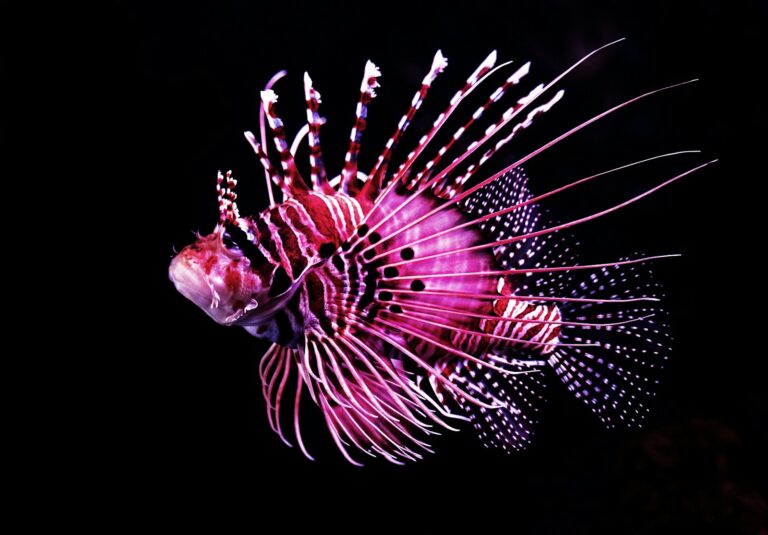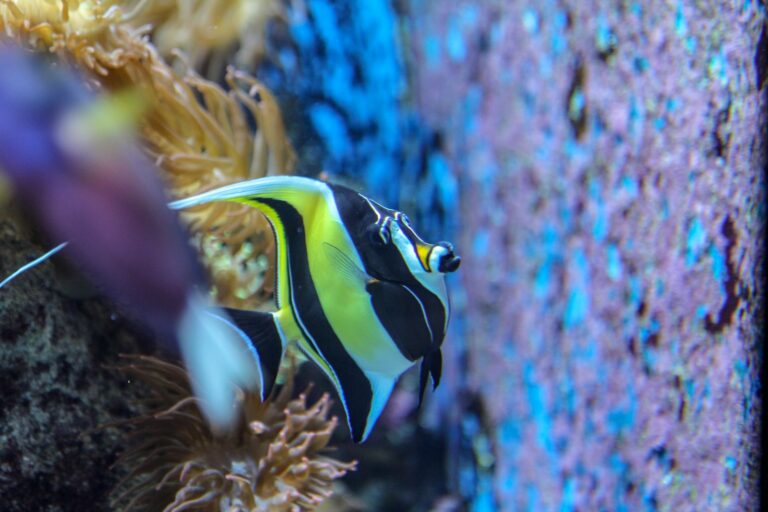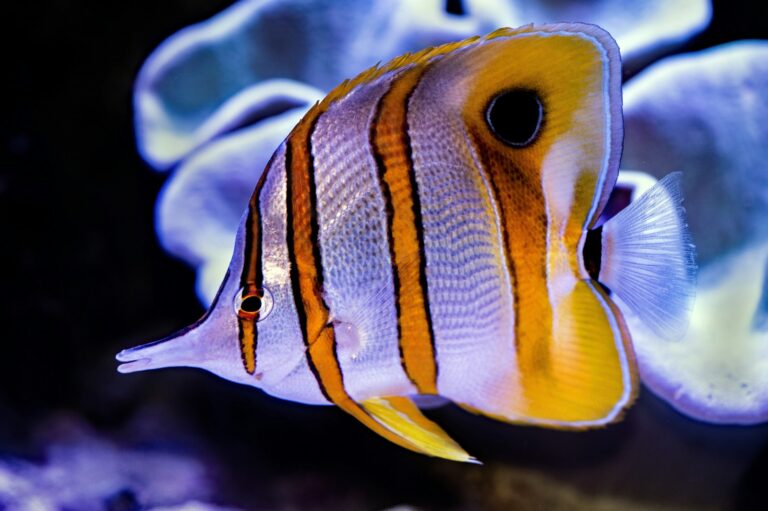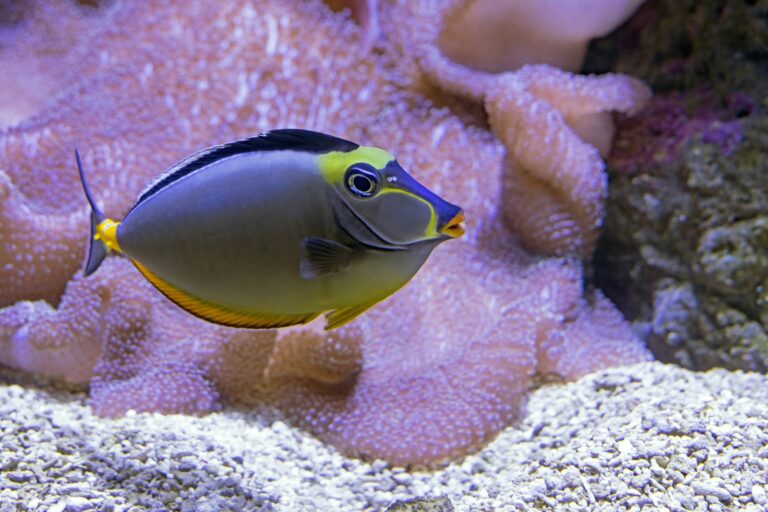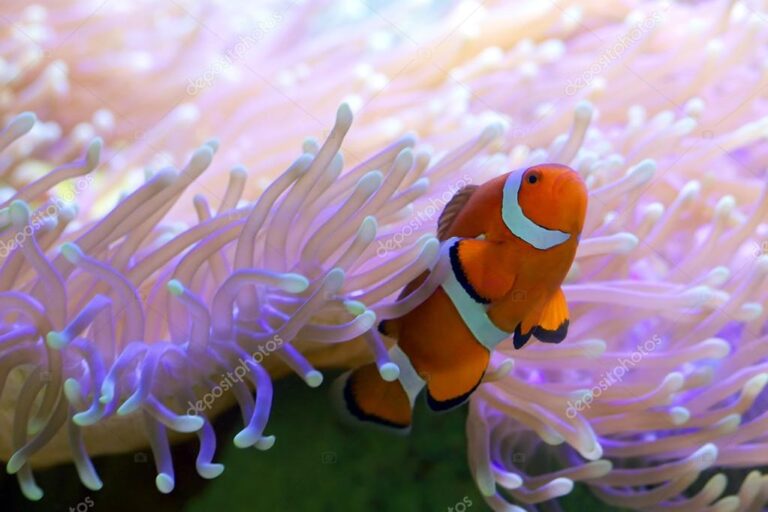Everything You Need to Know About Keeping Hawkfish in a Saltwater Aquarium

Hawkfish are a captivating addition to any saltwater aquarium, thanks to their unique behaviors and striking appearance. These hardy and charismatic fish bring personality to your tank with their perching habits and bold antics. However, keeping Hawkfish requires a good understanding of their needs, compatibility with other species, and tank setup requirements.
Whether you’re a seasoned saltwater hobbyist or considering your first Hawkfish, this guide covers everything from characteristics to compatibility, feeding, and tank setup. Get ready to make these fascinating swimmers a vibrant part of your underwater world.
What Makes Hawkfish Unique?
Hawkfish are a genus of saltwater fish known for their vibrant colors, hardy nature, and unmistakable perching behavior. Native to coral reefs across the Pacific and Indian Oceans, these fish are commonly found lounging on corals, rocks, or other high points in the tank. They use their pectoral fins to perch and observe their surroundings like sentinels, giving them the appearance of “hawks” on the lookout—hence their name.
Behavioral Characteristics of Hawkfish:
- Perching habits that allow them to rest on corals or rock structures.
- Bold and curious personalities, often interacting with their environment or observing tank activity.
- Solitary nature, occasionally displaying territorial or aggressive tendencies towards similar-sized or smaller tankmates.
Expert Quote: “The perching behavior of Hawkfish makes them a captivating addition to a reef setup.” – Sarah Coral, Experienced Aquarium Keeper
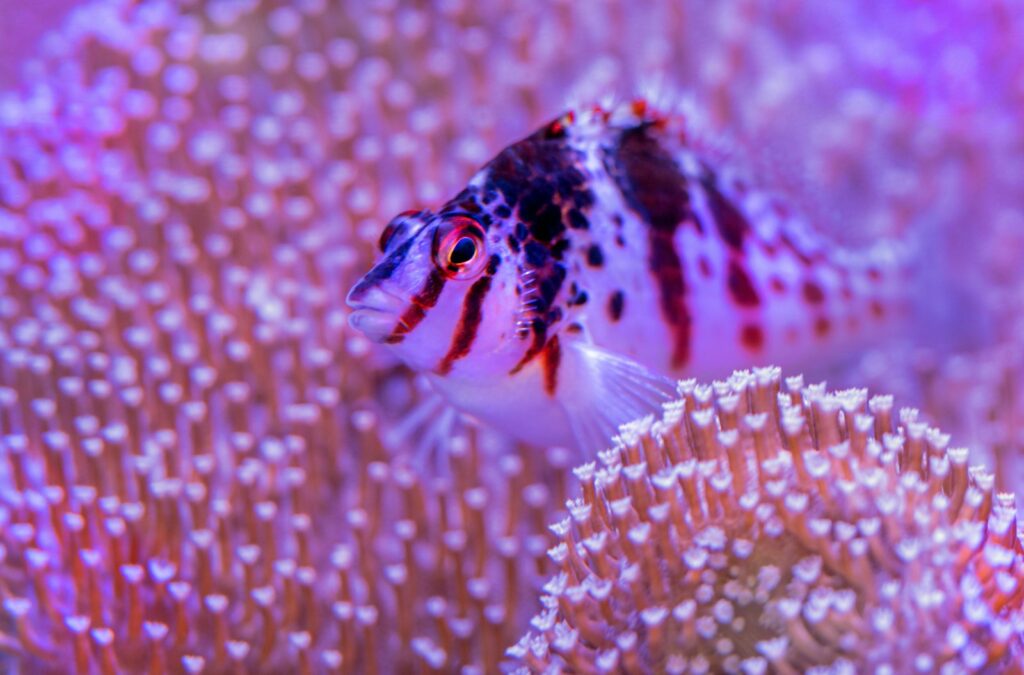
Why Keep Hawkfish in a Saltwater Aquarium?
Adding a Hawkfish to your saltwater aquarium comes with numerous benefits. These fish are not just visually stunning but also useful in maintaining the ecological balance of your tank.
Key Benefits of Hawkfish:
- Visual Appeal: Their vibrant colors and energetic personalities add life and dynamism to any tank.
- Low Maintenance: Hawkfish are hardy and relatively easy to care for, making them perfect even for intermediate-level aquarium keepers.
- Practical Contributions:
- Certain species, like the Flame Hawkfish, can help control populations of bristle worms or other pests.
- They are known to eat leftover food, contributing to cleaner tank conditions
Case Study: One hobbyist reported that introducing a Flame Hawkfish into their reef tank helped control bristle worms while adding a pop of bright red to the aquascape.
Are Hawkfish Compatible with Other Tank Residents?
Compatibility is a critical consideration for keeping a happy and harmonious tank. Hawkfish generally do well with other saltwater species, but their territorial tendencies can sometimes lead to conflicts with smaller or similarly sized fish and invertebrates.
Key Compatibility Tips:
- Avoid Small or Docile Tankmates: Hawkfish may show aggression toward fish smaller than themselves or timid species.
- Care with Shrimps and Crabs: Hawkfish have been known to snack on small invertebrates, so exercise caution in mixed-species tanks.
- Pair with Larger or Assertive Fish: Species such as Tangs, Clownfish, and Wrasses often coexist peacefully with Hawkfish.
- Provide Plenty of Space and Hideouts: This minimizes territorial disputes and gives all tank inhabitants room to thrive.
Expert Tip: “Providing the right rockwork and hiding spots is crucial for their well-being and to minimize aggression.” – Tom Ocean, Saltwater Aquarium Specialist
Setting Up the Ideal Tank for Hawkfish
Hawkfish are hardy and adaptable, but creating the ideal environment will ensure their health and happiness. Here’s how to set up a tank optimized for their unique needs.
Tank Setup Checklist:
- Tank Size: A minimum of 30 gallons for smaller species, but 50 gallons or more for larger varieties like Longnose Hawkfish.
- Rockwork and Perches:
- Construct plenty of rock structures and high perches for resting and observing.
- Branching corals or artificial decorations also make excellent perching spots.
- Filtration and Water Quality:
- Maintain stable saltwater parameters with slightly alkaline pH (8.1–8.4) and optimal salinity levels (1.023–1.025).
- Use high-quality filtration to ensure clean water, since Hawkfish thrive in well-maintained environments.
- Moderate Lighting:
- Ensure adequate lighting without overwhelming the residents of the tank, especially if corals share the space.
Personal Experience: A Longnose Hawkfish once displayed a preference for perching on a branching coral at the highest point, making it a focal point in the tank.
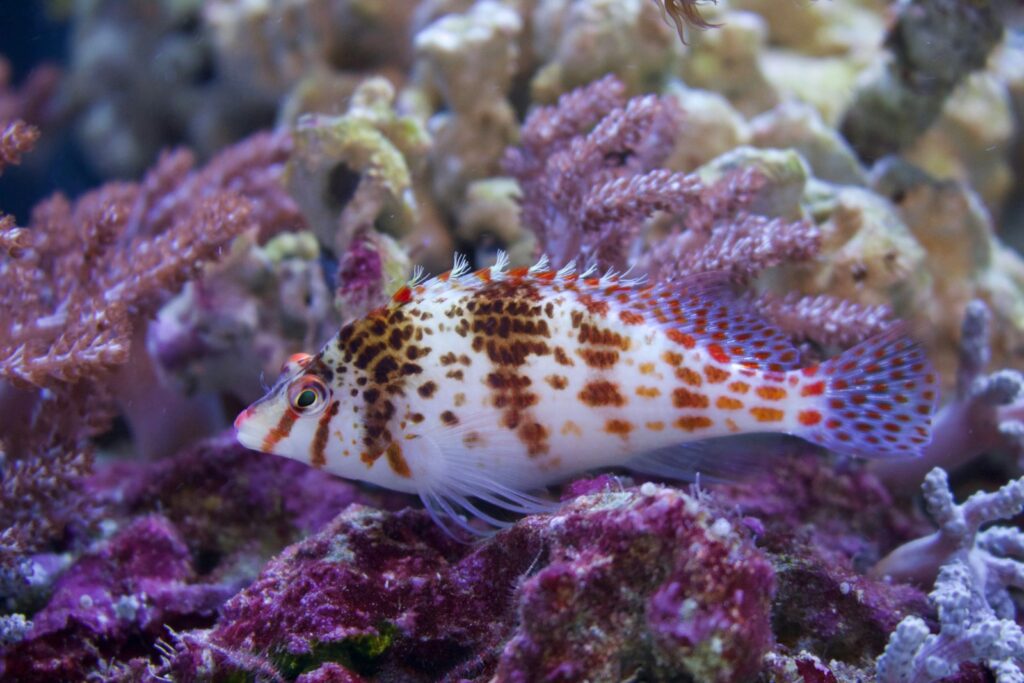
Common Hawkfish Species for Your Aquarium
There are several species of Hawkfish to choose from, each with unique colorations and characteristics.
- Flame Hawkfish (Neocirrhites armatus): Brilliant red body with black markings, perfect for adding a burst of color.
- Longnose Hawkfish (Oxycirrhites typus): Distinctive elongated snout and checked red-and-white patterning.
- Falco Hawkfish (Cirrhitichthys falco): A smaller species with spotted patterns, ideal for mid-sized aquariums.
- Arc-Eye Hawkfish (Paracirrhites arcatus): Recognizable by its reddish tones and ‘arc’-shaped marking above the eyes.
Feeding and Diet Requirements
Hawkfish thrive on a varied diet rich in proteins. Their carnivorous nature means they enjoy live or frozen foods, along with high-quality pellets or flakes.
Dietary Guidelines:
- Primary Diet:
- Mysis shrimp
- Brine shrimp
- Chopped squid or fish
- Supplements:
- Vitamin-enriched foods for optimal health and vibrant coloration.
- Occasional treats like bloodworms or krill.
- Feeding Frequency:
- Twice daily in small portions to maintain a healthy appetite and prevent overfeeding.
Tip for Beginners: Use frozen or prepared foods as a convenient and nutritious option for your Hawkfish.
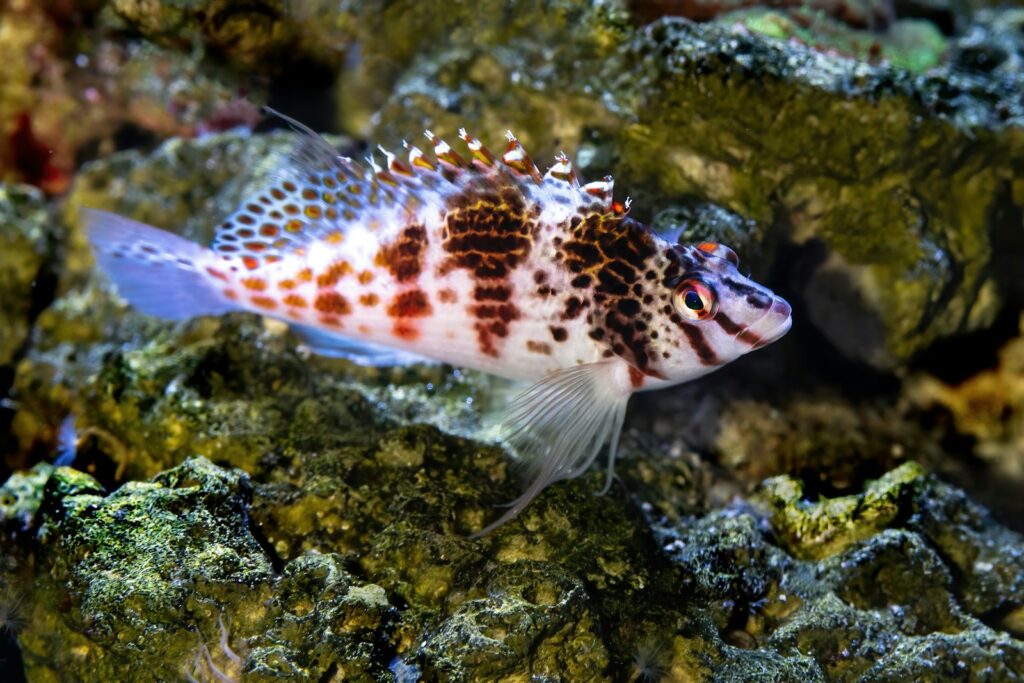
Monitoring Hawkfish Health
Keeping a close eye on your Hawkfish’s health is crucial to prevent and address any potential issues.
Common Health Concerns:
- Marine Ich (Cryptocaryon):
- Symptoms include small white spots and lethargy. A quarantine tank and copper-based treatments can help.
- Bacterial Infections:
- Improper water quality may give rise to cloudy eyes or skin abrasions. Address this with regular water changes and medications.
- Malnutrition:
- Ensure a balanced diet with variety to prevent vitamin deficiencies.
Final Thoughts on Hawkfish Keeping
Hawkfish bring unrivaled charm and character to any saltwater aquarium. From their bold personalities to their practical benefits in maintaining tank health, they are a favorite among hobbyists for good reason. With proper care, compatible tank mates, and an ideal setup, you’ll have a thriving Hawkfish as the star of your aquarium.
Want to take your saltwater aquarium game to the next level? Comment below or share your own Hawkfish stories—we’d love to hear about your underwater adventures. Happy fishkeeping!


